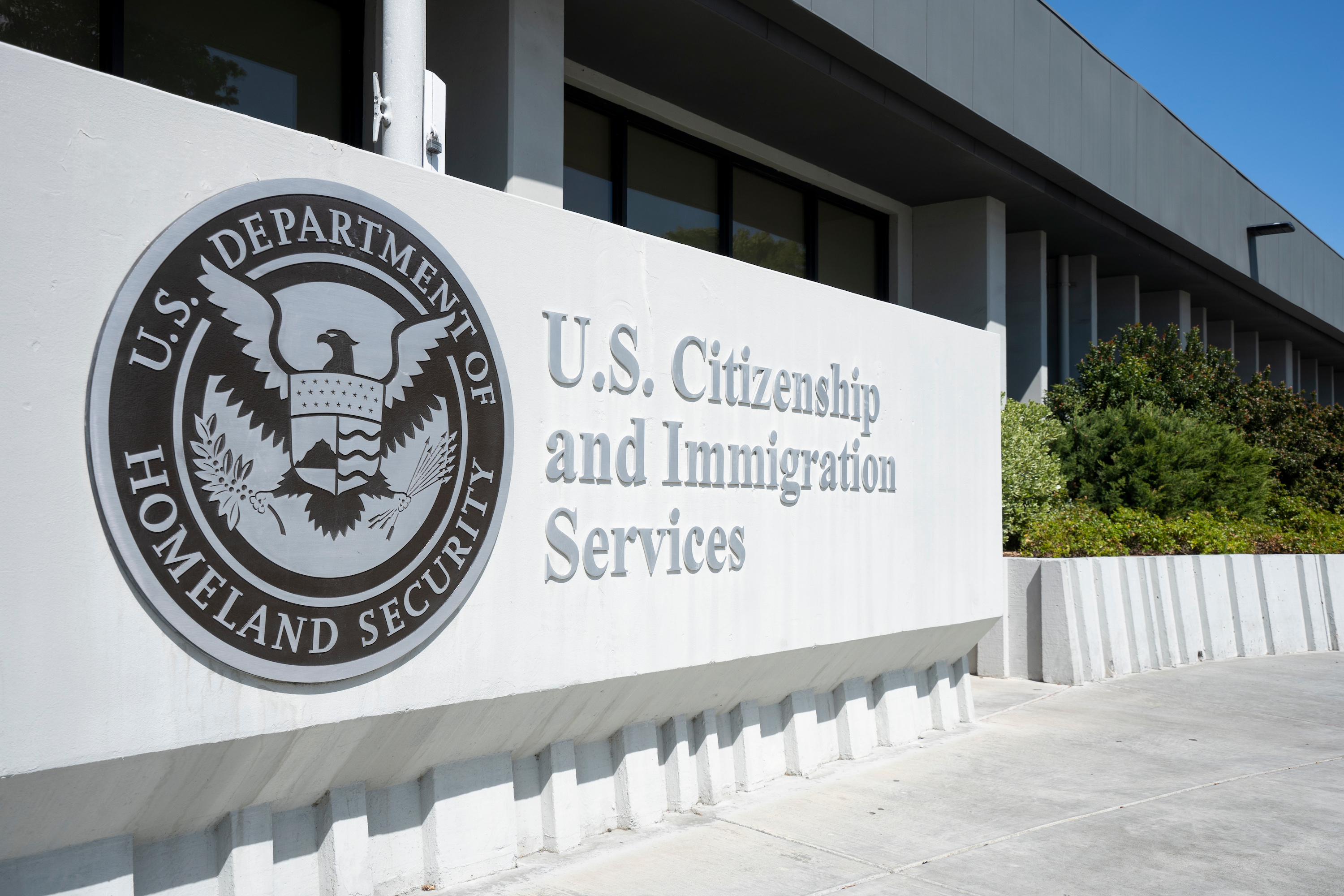
.svg)
When people hear the phrase “extraordinary ability,” they often imagine Nobel Prize winners, Oscar recipients, or world champions. While those individuals certainly qualify, U.S. immigration law recognizes a much wider range of achievements. Several immigration categories are designed for people who have reached the top of their field or whose work carries significant national importance. Each has different requirements and outcomes, and the key is understanding which pathway fits best.
The three most relevant options are:
- EB-1A Extraordinary Ability Immigrant classification (Green Card)
- O-1 Extraordinary Ability Nonimmigrant classification
- EB-2 National Interest Waiver (NIW) (Green Card)
Together, they provide options for both permanent residency and temporary work authorization. Below, we explain how each works, what makes them different, and the five signs that suggest you may qualify.
The Broader Context
Petitions filed in these categories are increasing. In the first quarter of fiscal year 2025, U.S. Citizenship and Immigration Services (USCIS) received 7,338 EB-1A petitions, up more than 50% from the prior quarter. This surge highlights the growing interest among highly skilled professionals in pursuing U.S. opportunities through the extraordinary ability classification.
At the same time, many foreign national candidates are uncertain about which category fits them best. The EB-1A is often described as the highest bar, the O-1 provides a flexible entry point, and the EB-2 NIW focuses on contributions to the U.S. national interest.
The five signs outlined below can help you determine which category may align with your achievements.
EB-1A: Extraordinary Ability Classification
The EB-1A is one of the most prestigious employment-based immigrant categories. It offers permanent residency without the need for employer sponsorship, which is uncommon in U.S. immigration. However, the requirements are demanding. Candidates must demonstrate sustained national or international acclaim.
Five Signs You May Qualify for EB-1A
- You have received significant national or international awards.
- Your work has been published or cited extensively.
- You have held leadership or critical roles in well-regarded organizations.
- You have served as a judge or evaluator of peers in your field.
- Your compensation or recognition is well above the norm in your industry.
Example: A biomedical researcher whose studies are widely cited, who serves as a peer reviewer for journals, and who directs projects at a leading institution may qualify for EB-1A. For more detail, see our review of the most effective EB-1A evidence categories.
Example: An experienced technology journalist who is a member of prestigious press clubs, has been invited to lecture at leading universities, and has received media coverage for their work may also qualify. For more, see our guide of the most effective EB-1A evidence categories.
O-1: Extraordinary Ability Temporary Work Visa
The O-1 is a non-immigrant classification, which means it does not directly provide permanent residency. Instead, it grants temporary work authorization, usually tied to an employer or project. It is often used by individuals who are building toward an EB-1A petition or who need to work in the United States quickly.
There are two versions: O-1A for science, business, education, and athletics, and O-1B for the arts, film, and television.
Five Signs You May Qualify for O-1
- You have won notable national or industry awards.
- You have worked for recognized organizations or on prestigious projects.
- You have been featured in trade press, media, or academic publications.
- You have made original contributions that are recognized by your peers.
- You have been invited to present, perform, or exhibit at respected venues.
Example: A startup founder whose product has been covered in industry publications, who has spoken at global technology conferences, and who has raised significant investment may be a strong O-1 candidate. The O-1 is also common for artists and performers who demonstrate distinction through performances, exhibitions, or creative contributions.
EB-2 NIW: National Interest Wavier Green Card
The EB-2 NIW is another path to permanent residency. Unlike EB-1A, the standard is not global recognition but rather showing that your work has substantial merit and national importance to the United States. Applicants can self-petition if they can demonstrate that waiving the usual job offer requirement is in the national interest.
Five Signs You May Qualify for EB-2 NIW
- Your work addresses a U.S. priority such as public health, climate, technology, or national security.
- You hold an advanced degree or can show exceptional ability in your field.
- You have published research, secured patents, or developed innovations that contribute to your industry.
- You can demonstrate how your work benefits U.S. society or the economy.
- You can show that your beneficial work in the U.S. would be limited or otherwise hindered if it is tied to a single employer.
Example: An engineer developing renewable energy technology whose research is published and whose projects support U.S. energy goals may qualify for NIW.
Common Misconceptions
- “You need a Nobel Prize to qualify.” Recognition can include lesser-known but competitive awards, publications, or leadership roles.
- “You must meet every eligibility category.” Strong documentation in a few categories can outweigh weaker evidence elsewhere.
- “The O-1 is only for entertainers.” O-1A applies broadly across science, business, education, and athletics.
Choosing the Right Path
There is no single definition of extraordinary ability or national interest. The right pathway depends on your career stage, level of recognition, and long-term goals. It can also be influenced by other factors, like being uniquely qualified to carry out specific work that directly benefits the U.S.
- EB-1A may be right if you are already at the top of your field and want a direct path to a green card.
- O-1 may be right if you need temporary authorization to work in the United States while continuing to build your profile.
- EB-2 NIW may be right if your work advances important U.S. interests, even if your recognition is not yet international.
Action Steps: What to Do Next
- List your top achievements — awards, publications, leadership roles, or major projects.
- Collect documentation — press coverage, peer review invitations, patents, or strong recommendation letters.
- Match the right pathway — EB-1A for established leaders, O-1 for quick entry, EB-2 NIW for work tied to U.S. priorities.
- Plan for timing — O-1 can be fast, EB-1A and EB-2 NIW take longer preparation.
- Get expert guidance — an immigration professional can confirm eligibility and build a strong petition.
Final Thoughts
These immigration classifications provide varied opportunities for individuals who bring extraordinary skills and unique contributions. While the standards are high, they are not limited to world-famous names. Many professionals discover they qualify once they take stock of their achievements and align them with the right pathway.
{{cta-component-horizontal-aligned}}
.png)
When people hear the phrase “extraordinary ability,” they often imagine Nobel Prize winners, Oscar recipients, or world champions. While those individuals certainly qualify, U.S. immigration law recognizes a much wider range of achievements. Several immigration categories are designed for people who have reached the top of their field or whose work carries significant national importance. Each has different requirements and outcomes, and the key is understanding which pathway fits best.
The three most relevant options are:
- EB-1A Extraordinary Ability Immigrant classification (Green Card)
- O-1 Extraordinary Ability Nonimmigrant classification
- EB-2 National Interest Waiver (NIW) (Green Card)
Together, they provide options for both permanent residency and temporary work authorization. Below, we explain how each works, what makes them different, and the five signs that suggest you may qualify.
The Broader Context
Petitions filed in these categories are increasing. In the first quarter of fiscal year 2025, U.S. Citizenship and Immigration Services (USCIS) received 7,338 EB-1A petitions, up more than 50% from the prior quarter. This surge highlights the growing interest among highly skilled professionals in pursuing U.S. opportunities through the extraordinary ability classification.
At the same time, many foreign national candidates are uncertain about which category fits them best. The EB-1A is often described as the highest bar, the O-1 provides a flexible entry point, and the EB-2 NIW focuses on contributions to the U.S. national interest.
The five signs outlined below can help you determine which category may align with your achievements.
EB-1A: Extraordinary Ability Classification
The EB-1A is one of the most prestigious employment-based immigrant categories. It offers permanent residency without the need for employer sponsorship, which is uncommon in U.S. immigration. However, the requirements are demanding. Candidates must demonstrate sustained national or international acclaim.
Five Signs You May Qualify for EB-1A
- You have received significant national or international awards.
- Your work has been published or cited extensively.
- You have held leadership or critical roles in well-regarded organizations.
- You have served as a judge or evaluator of peers in your field.
- Your compensation or recognition is well above the norm in your industry.
Example: A biomedical researcher whose studies are widely cited, who serves as a peer reviewer for journals, and who directs projects at a leading institution may qualify for EB-1A. For more detail, see our review of the most effective EB-1A evidence categories.
Example: An experienced technology journalist who is a member of prestigious press clubs, has been invited to lecture at leading universities, and has received media coverage for their work may also qualify. For more, see our guide of the most effective EB-1A evidence categories.
O-1: Extraordinary Ability Temporary Work Visa
The O-1 is a non-immigrant classification, which means it does not directly provide permanent residency. Instead, it grants temporary work authorization, usually tied to an employer or project. It is often used by individuals who are building toward an EB-1A petition or who need to work in the United States quickly.
There are two versions: O-1A for science, business, education, and athletics, and O-1B for the arts, film, and television.
Five Signs You May Qualify for O-1
- You have won notable national or industry awards.
- You have worked for recognized organizations or on prestigious projects.
- You have been featured in trade press, media, or academic publications.
- You have made original contributions that are recognized by your peers.
- You have been invited to present, perform, or exhibit at respected venues.
Example: A startup founder whose product has been covered in industry publications, who has spoken at global technology conferences, and who has raised significant investment may be a strong O-1 candidate. The O-1 is also common for artists and performers who demonstrate distinction through performances, exhibitions, or creative contributions.
EB-2 NIW: National Interest Wavier Green Card
The EB-2 NIW is another path to permanent residency. Unlike EB-1A, the standard is not global recognition but rather showing that your work has substantial merit and national importance to the United States. Applicants can self-petition if they can demonstrate that waiving the usual job offer requirement is in the national interest.
Five Signs You May Qualify for EB-2 NIW
- Your work addresses a U.S. priority such as public health, climate, technology, or national security.
- You hold an advanced degree or can show exceptional ability in your field.
- You have published research, secured patents, or developed innovations that contribute to your industry.
- You can demonstrate how your work benefits U.S. society or the economy.
- You can show that your beneficial work in the U.S. would be limited or otherwise hindered if it is tied to a single employer.
Example: An engineer developing renewable energy technology whose research is published and whose projects support U.S. energy goals may qualify for NIW.
Common Misconceptions
- “You need a Nobel Prize to qualify.” Recognition can include lesser-known but competitive awards, publications, or leadership roles.
- “You must meet every eligibility category.” Strong documentation in a few categories can outweigh weaker evidence elsewhere.
- “The O-1 is only for entertainers.” O-1A applies broadly across science, business, education, and athletics.
Choosing the Right Path
There is no single definition of extraordinary ability or national interest. The right pathway depends on your career stage, level of recognition, and long-term goals. It can also be influenced by other factors, like being uniquely qualified to carry out specific work that directly benefits the U.S.
- EB-1A may be right if you are already at the top of your field and want a direct path to a green card.
- O-1 may be right if you need temporary authorization to work in the United States while continuing to build your profile.
- EB-2 NIW may be right if your work advances important U.S. interests, even if your recognition is not yet international.
Action Steps: What to Do Next
- List your top achievements — awards, publications, leadership roles, or major projects.
- Collect documentation — press coverage, peer review invitations, patents, or strong recommendation letters.
- Match the right pathway — EB-1A for established leaders, O-1 for quick entry, EB-2 NIW for work tied to U.S. priorities.
- Plan for timing — O-1 can be fast, EB-1A and EB-2 NIW take longer preparation.
- Get expert guidance — an immigration professional can confirm eligibility and build a strong petition.
Final Thoughts
These immigration classifications provide varied opportunities for individuals who bring extraordinary skills and unique contributions. While the standards are high, they are not limited to world-famous names. Many professionals discover they qualify once they take stock of their achievements and align them with the right pathway.
{{cta-component-horizontal-aligned}}
Ready to see if you qualify for an Extraordinary Ability Visa?
Take our complimentary assessment and receive expert legal advise from our attorney team
.png)
.png)







.svg)
.avif)